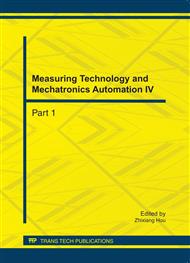p.1367
p.1371
p.1378
p.1382
p.1386
p.1392
p.1399
p.1405
p.1409
Design and Simulation of High Altitude Air-Launched Automatic Underwater Vehicles
Abstract:
In this paper, an high altitude air-launched automatic underwater vehicles (AL-AUV) is designed based on the traditional torpedo-like AUV, REMUS. And an additional ex-range gliding wings unit is assembled on the top of AUV, which enable the AUV to be dropped at high altitude and gliding long distance to reach the signed investigating ocean field. The controllable surface on the wings also enhanced the controllability and flexibility of AUV gliding through the air and the ability against the influence of airflow interference. The AUV’s six DOF gliding model is established and a simulation system of AL-AUV is built with Matlab/Simulink. Analyzing the recorded simulation velocity and pitch characteristics of AL-AUV deployed at varying initial velocities and wing area, the optimized wing is selected.
Info:
Periodical:
Pages:
1386-1391
Citation:
Online since:
October 2011
Authors:
Keywords:
Price:
Сopyright:
© 2012 Trans Tech Publications Ltd. All Rights Reserved
Share:
Citation:


